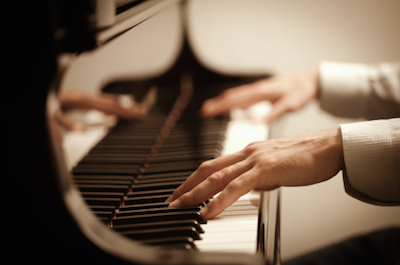A piano’s touch is equally important as its tone.
Touch refers to the responsiveness of the mechanical action of the piano. It’s what is responsible for giving a piano a full range of power.
 When an upright piano begins losing its mechanical efficiency, it is known within the industry as having gone out of regulation. Putting it back in regulation requires exacting measurements and corresponding adjustments.
When an upright piano begins losing its mechanical efficiency, it is known within the industry as having gone out of regulation. Putting it back in regulation requires exacting measurements and corresponding adjustments.
What causes a piano to go out of regulation?
Pianos are regulated in the factory where they are built. But even a piano of the finest quality can go out of regulation over time. The action of a piano is a very complex mechanical process. When a note is played, the energy from your finger puts a balanced system of levers and springs into motion. Various pivot points are maneuvered, felt cushions are utilized to produce the appropriate sounds. Over time, these felt pieces compress, adjust, and wear out. As this happens, gradual loss of performance occurs. Although this process is gradual, there becomes a point in time where you can no longer ignore the obvious problems that are occurring.
What is the process for regulating a piano?
It begins with leveling natural keys. One of several measurement tools is used to determine the exact height of each key. They are adjusted with fine paper punches to gradually bring a key back into alignment with the other keytops. After all, keys have been leveled, the leveling papers and the balance rail felts will be flipped so that the felts are on top.
In addition to leveling, regulation also includes setting the hammer blow, taking up the lost motion, adjusting the hammer letoff, setting the key dip and checking the amount of aftertouch.
How extensive is the process?
In most cases, piano regulation is a job that can be done onsite. In some cases, the action may need to be taken in for related repair work, but the actual job of regulation is done at the piano. Extensive work is completed, as adjustments are made to every note on the piano. The longer it has been since the piano was previously regulated, the more time it will take to bring it back into adjustment.
How often should a piano be regulated?
For most pianos, regulation every 5 to 10 years should be sufficient. Since a piano goes out of regulation as a result of the amount of play, a piano may need more or less regulation depending on how often it is played.

